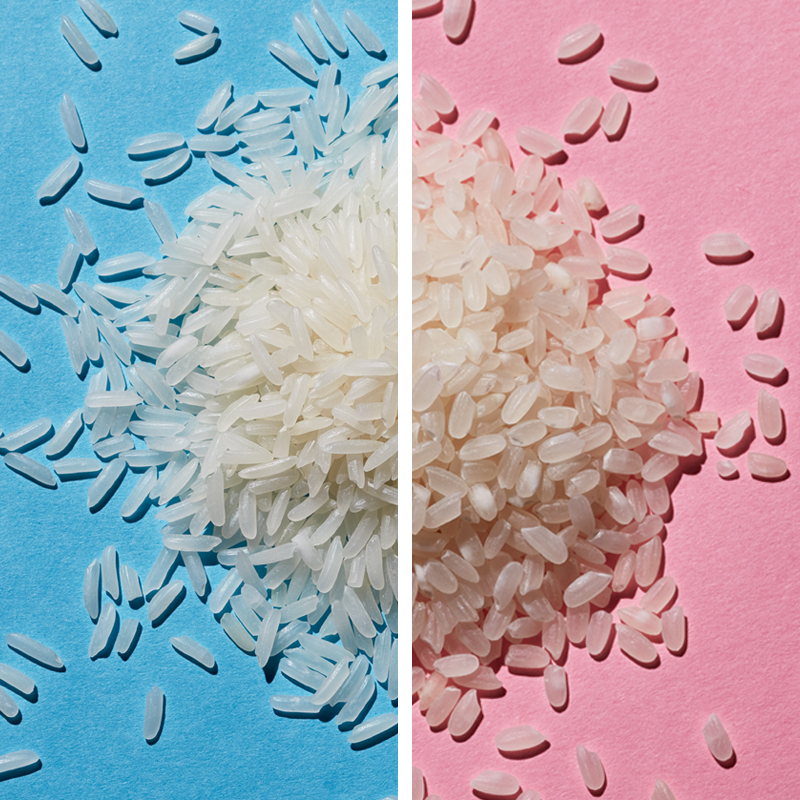
Short-grain rice is very starchy and cooks up soft and sticky. It’s used in things like sushi, paella, and risotto.
Long-grain rice contains less starch so the cooked grains are drier and more separate. It’s often used in pilafs or dishes with a lot of sauce.
Long Grain Rice
True to its name, long-grain rice is slim and lengthy, nearly four to five times longer than it is wide. This type of rice includes American long-grain white and brown rices, Basmati rice, and Jasmine rice, and produces distinct firm grains that stay fluffy and separate after cooking. The grains have a firm, dry texture, and are best for side dishes, pilafs, and salads.
Jasmine and basmati are long-grain varieties that have been cultivated to bring out distinctive flavor profiles. They often turn up in Indian and Asian food.
Short-Grain Rice
Short-grain rice, named for its size, is only a tiny bit longer than it is wide. It’s not uncommon for medium- and short-grain rice to get combined into the same category, which can make for some confusion.
This squat, plump rice cooks up soft and tender, and is known for sticking together and clumping. American short-grain brown rice and sushi rice are common varieties of short-grain rice. Use short-grain rice for sushi, molded salads, and pudding.
Brown rice—which is also available in long and short grains—is a lot chewier and heartier than white rice and takes about twice as long to cook.
Sushi or ‘sticky’ rice: A more glutinous rice, the sticky nature of these grains (when cooked) allows for manipulation and shaping — making it ideal for homemade sushi rolls or wraps.